1929 – The beginning and the Miniature Church
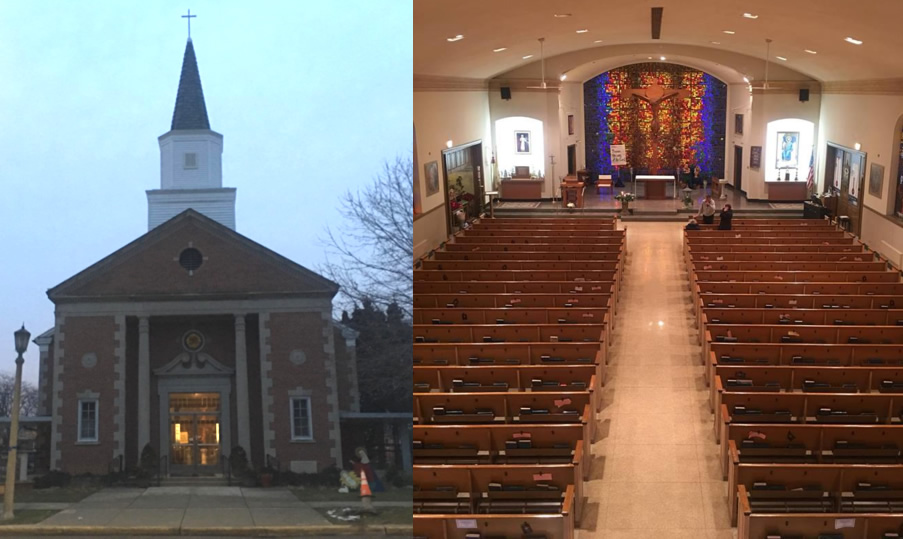
In the early 1920’s, the Village of River Grove was slowly growing. Most Catholic families attended Mass at St. William in Chicago, since it was accessible by bus and railroad. Many children attended school there, but because of overcrowding in the 1920’s, most started attending St. Gertrude in Franklin Park. In 1926 St. Cyprian’s was organized under Cardinal Mundelein as a mission church of St. Gertrude’s parish. The first mass was celebrated at Senf’s Hall, then at the northwest corner of Thatcher and Grand.
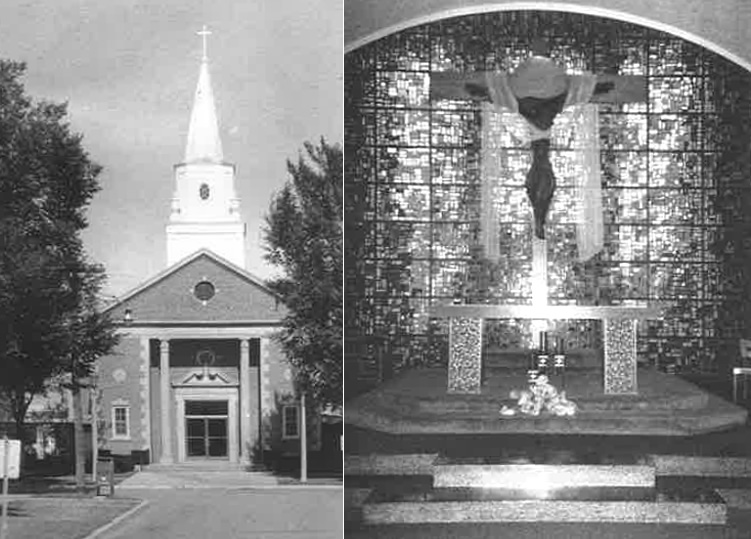
Father L.P. Hurkmans, pastor of St. Gertrude, procured land to begin construction of St. Cyprian church and school, which would cost $40,000. On September 12, 1926 the cornerstone was laid dedicating the new church and school. In January of 1927, Rev. George P. Stafford was appointed pastor. The original boundaries were Addison to the north, North Avenue to the South, 76th Street in Elmwood Park to the East and the Des Plaines River to the West.
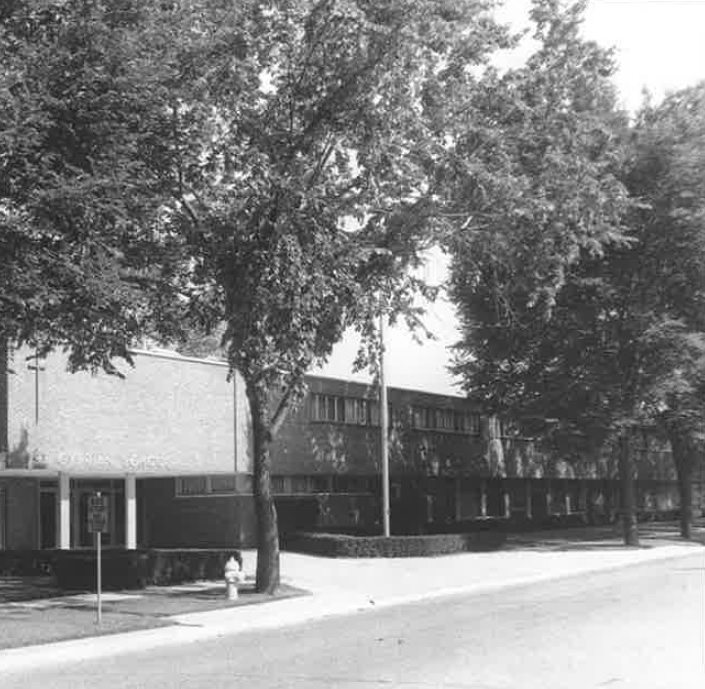
With the opening of the new building, school children in grades 1 through 7 were transferred from St. Gertrude to St. Cyprian under the direction of the School Sisters of St. Francis of Milwaukee. The 8th graders stayed at St. Gertrude to graduate. Three classrooms opened, with two grades sharing a room. Mass was held in the basement.
In 1927 there were 125 registered families in the parish, and school tuition was $4.85 per child.
In 1929 the temporary church, called the “Portable” was erected. It had been used by other parishes, including St. Thomas Aquinas, then Resurrection, St. Timothy, and St. Hilary. The Holy Name Society helped shore it up, since it was structurally weakened by being moved. In 1940 a convent was purchased in the 2500 block of Erie Street to replace the rented home the Sisters had used for the first 14 years.
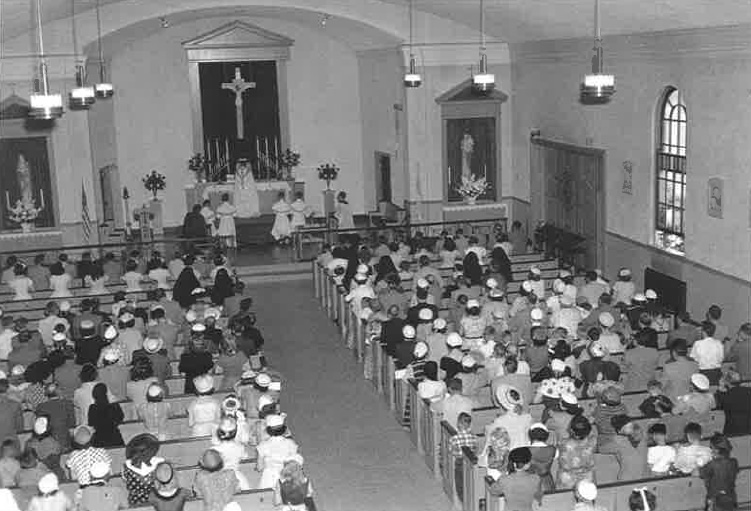
In October 1946, Father Stafford was appointed to Maternity BVM in Chicago. When he left it was discovered that he had never taken a salary and that he was owed $12,000. He only asked for a settlement of $1,000. The new pastor was Rev. Joseph F. Byrne who was well-liked by the parish. In 1949 construction of the new church was approved with the firm of Pirola and Enbach as architects and engineers. The cornerstone was laid on June 11, 1950. The cost of the building was $117,000 less furnishings and architect fees.
The new church was dedicated by Samuel Cardinal Stritch in September 1951. The “Portable” was used for classrooms. In 1952 the first Associate was appointed, Rev. Thomas Seitz. Father Byrne died in 1954 after resigning as pastor due to illness.
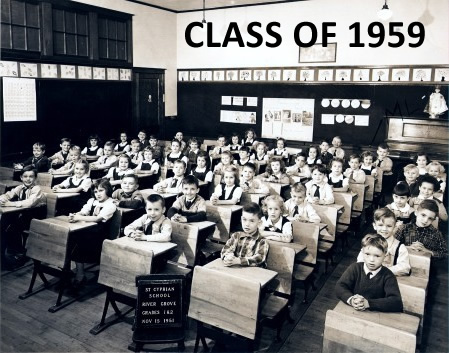
Rev. Arthur Douaire was appointed pastor in early 1954. He expanded the parish facilities and built a new school, convent, and rectory. The new school opened in September 1954 with eight Sisters and a lay teacher. Due to overcrowding, the children attended classes on a split schedule; half from 8 AM to noon and half from noon to 4 PM. Tuition was now $1.50 a month and 5 cents a ride for the bus.
By 1961 parish organizations and the school were booming. The school held 734 students. In 1963 there were 7 Sunday Masses, at 6:30, 7:30, 8:30, 9:30, 10:30, 11:30 AM and 12:30 PM. In 1965 two extra Masses were added to the schedule, at 10:30 and 11:30 AM in the annex.
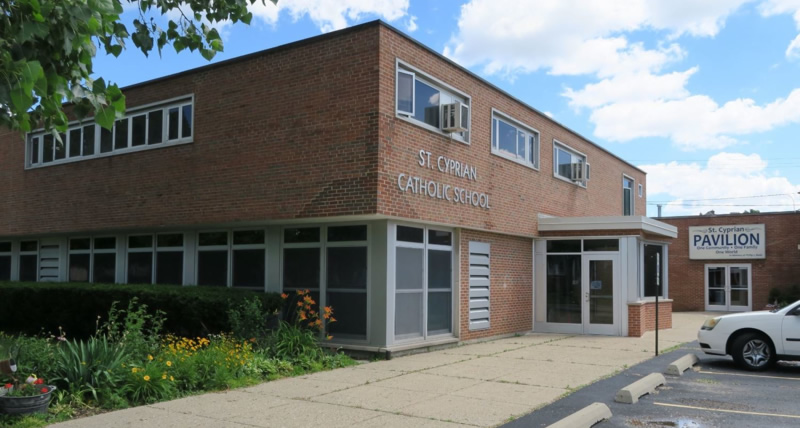
In 1969, Rev. John Lucas became an Associate. The Pavilion was erected from a garage and storage area. In 1975 the school added a Kindergarten class for the first time. In 1976, Father Douaire became ill and died in 1978. He had devoted himself to the people of St. Cyprian and River Grove for 22 years. Rev. Thomas Powers was appointed Pastor in 1977.
Over the years, the organizations have been very active, especially in raising funds to cover the debts accrued by building the school and church, providing substantial support to the parish. The School Sisters of St. Francis were involved from the very beginning to the end of the parish, working tirelessly for almost no pay and educating thousands of children.
This information is from a booklet published for the Golden Jubilee in 1977.
From the book Images of America: River Grove by Kenneth J. Knack: The enrollment in the school in 2017 was only 138. In 2018 the Archdiocese of Chicago decided to permanently close the school after the 2018 term and merge St. Cyprian with Elmwood Park’s St. Celestine parish. Both churches were to remain open as worship centers for the new combined parish named St Mother Theodore Guerin parish.
To be continued…
Stations of the Cross at St. Cyprian
Information below taken from https://jeancharlot.org.
Way of the Cross created by Jean Charlot (May 1935 – January 1937) – Oil on canvas. Fourteen circular 3 ft wide × 3 ft high panels. The work was installed in the 1950s – JCC: ART: MU 5
Interior view of church – Right wall with oil paintings
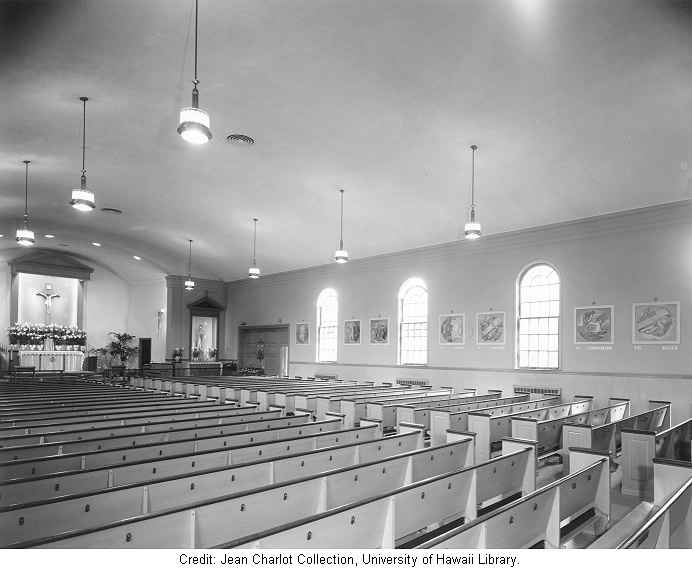
Interior view of church – Left wall with oil paintings
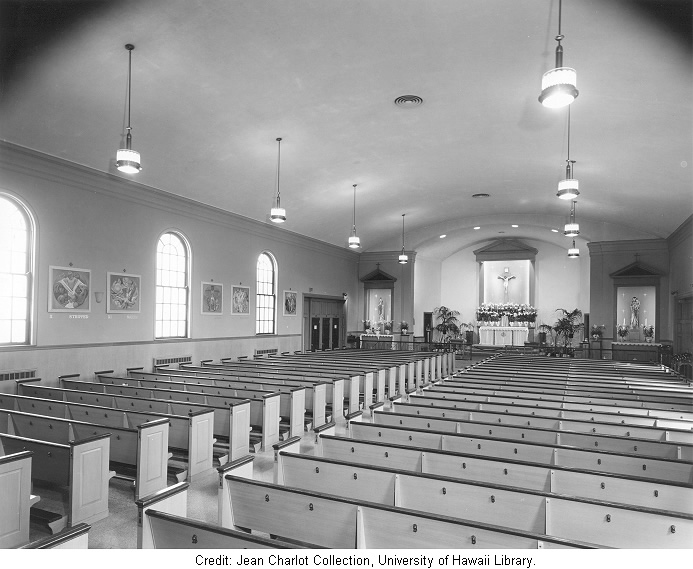
Station I – Christ before Pilate
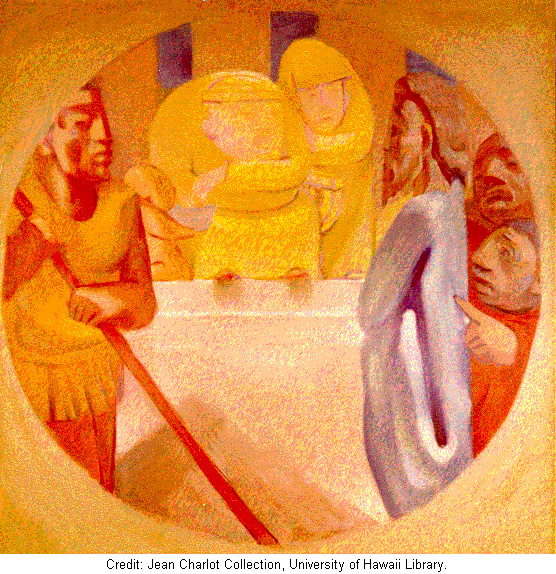
Station II – Christ receives Cross
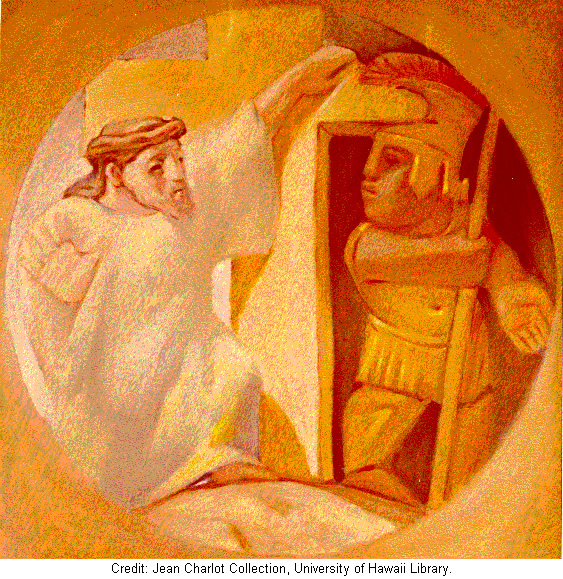
Station III – First fall
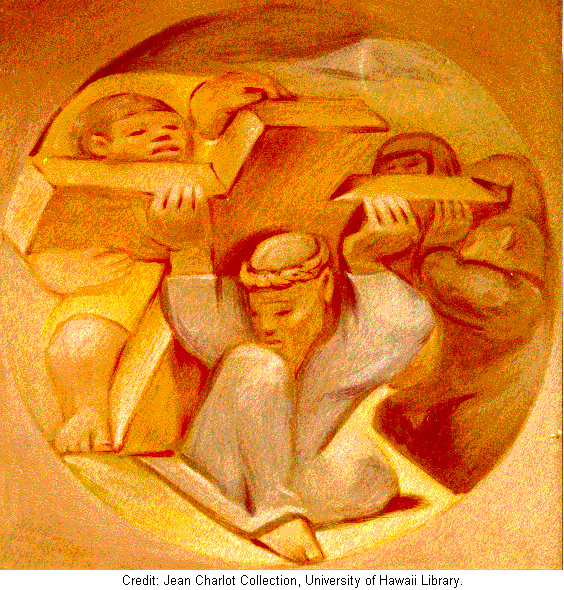
Station IV – Christ meets Mary
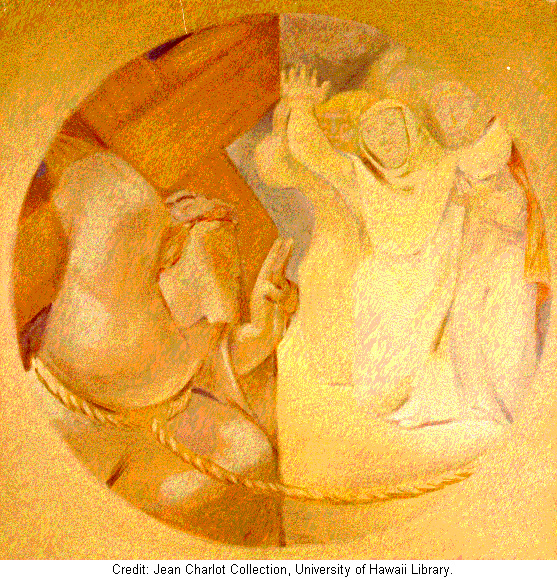
Station V – Simon helps Jesus
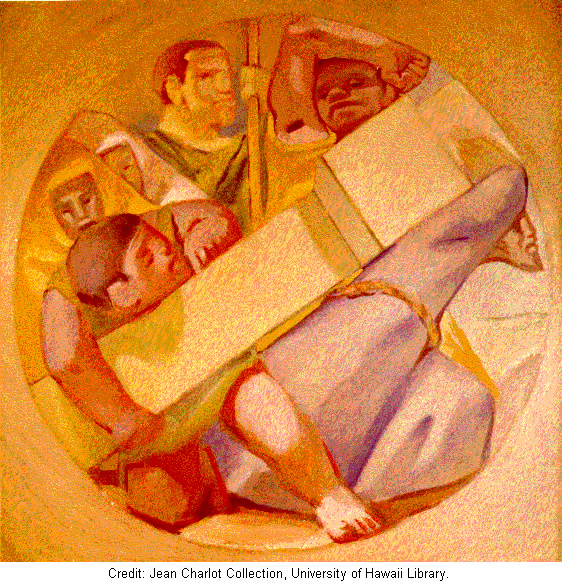
Station VI – Veronica wipes the face
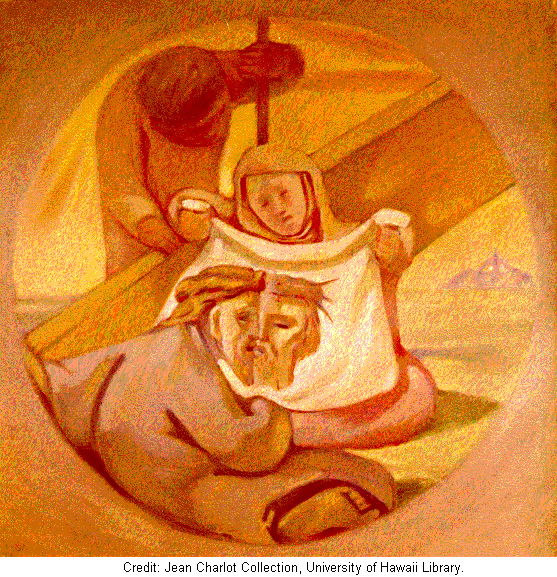
Station VII – Second fall
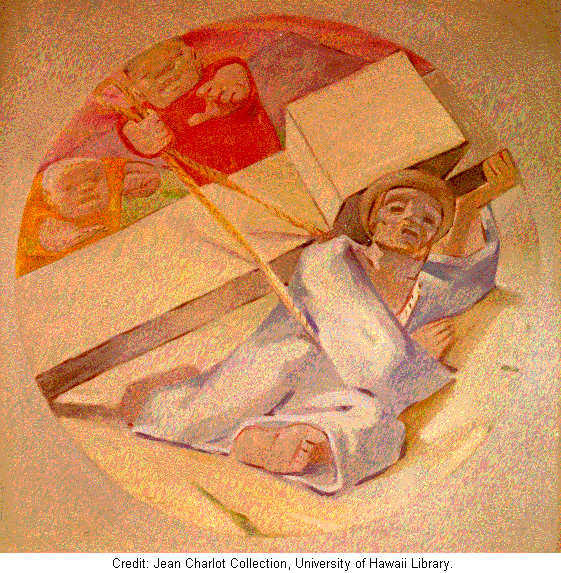
Station VIII – Jesus speaks to the Holy woman
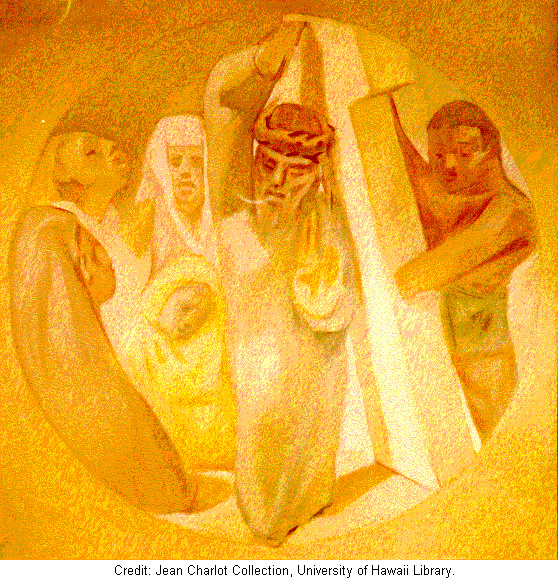
Station IX – Third fall
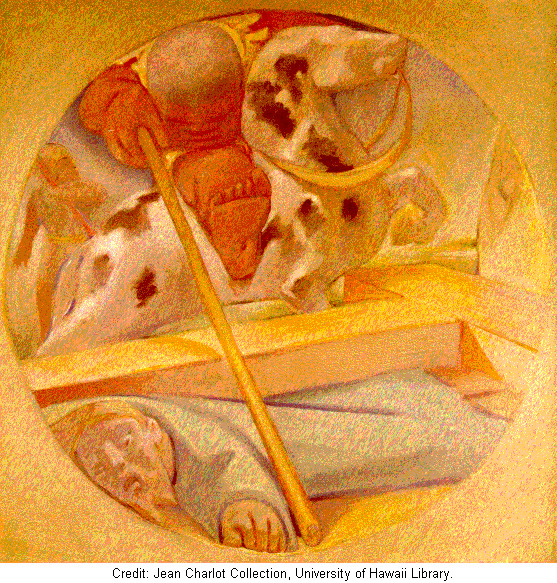
Station X – Jesus is stripped
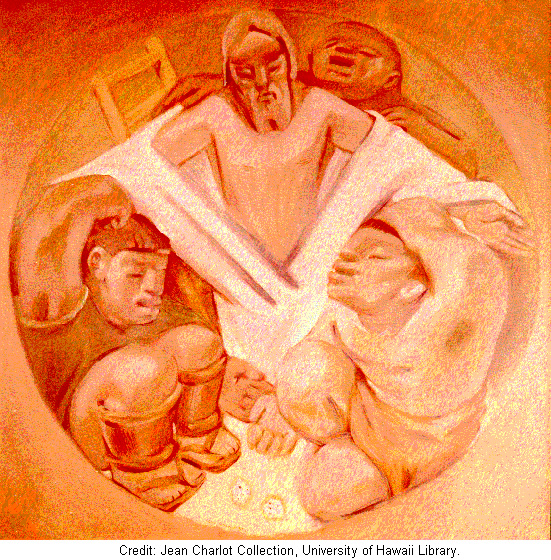
Station XI – Nailed to Crossed
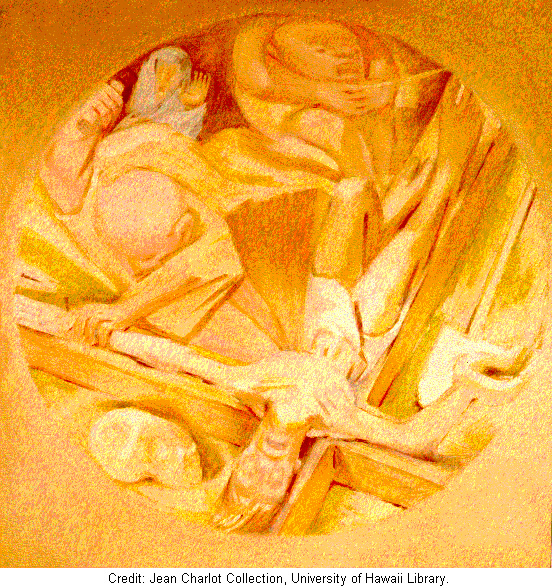
Station XII – Crucifixion
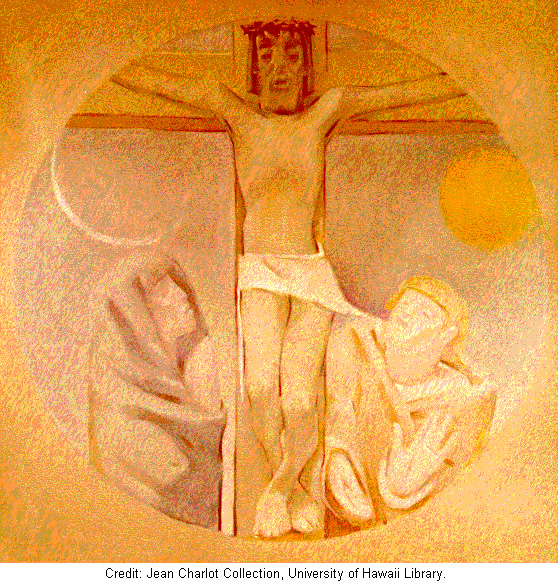
Station XIII – Deposition
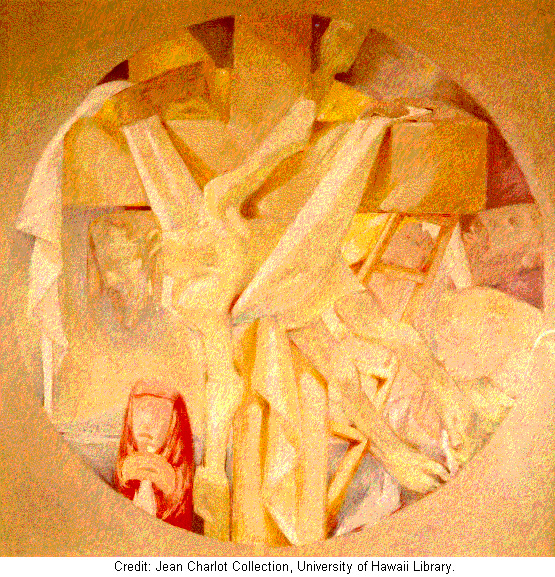
Station XIV – Burial
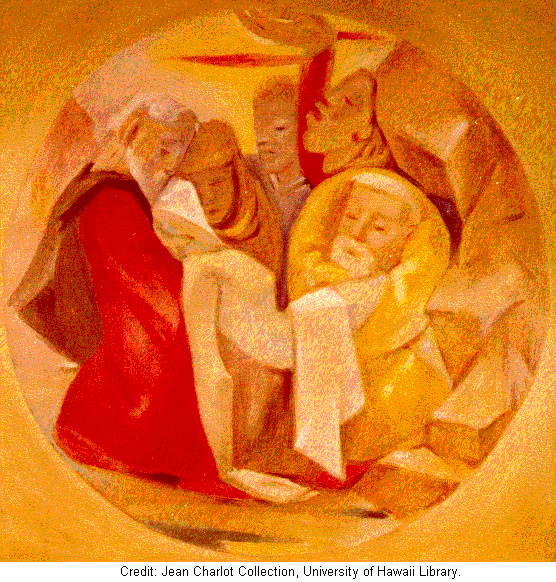
Who Was St. Cyprian?
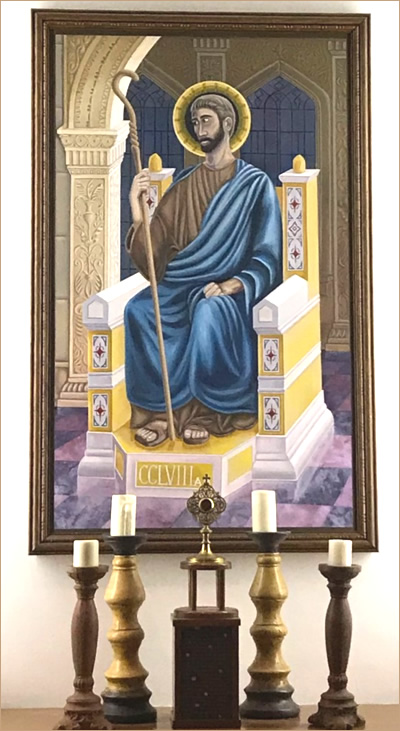
St. Cyprian
Feast Day on September 16
c.200-210-258
Information from catholic.org and Wikipedia
The exact year Cyprian was born is not known, but it was early in the third century between the years 200-210. Originally named Thascius, he was born in Carthage, which is now Tunisia in North Africa to a wealthy pagan family. He was a “pleader in the courts,” an orator and a teacher.
After his conversion to Christianity he gave a portion of his wealth away to the poor of Carthage and was ordained a deacon, then a priest, and between July 248 and April 249 he was elected bishop of Carthage by popular acclaim, where he served until his death September 14, 258.
He has been considered by some to be second only to St. Augustine as one of the most important of the early church fathers. He was a prolific writer. Many of his letters have been preserved. Most of his writings rose from his own pastoral experience. He was imprisoned for refusing to conform to the Roman rites and beheaded on September 14, 258.
The public examination of Cyprian by Galerius Maximus, on 14 September 258 has been preserved.
Galerius Maximus: “Are you Thascius Cyprianus?”
Cyprian: “I am.”
Galerius: “The most sacred Emperors have commanded you to conform to the Roman rites.”
Cyprian: “I refuse.”
Galerius: “Take heed for yourself.”
Cyprian: “Do as you are bid; in so clear a case I may not take heed.”
Galerius, after briefly conferring with his judicial council, with much reluctance pronounced the following sentence: “You have long lived an irreligious life, and have drawn together a number of men bound by an unlawful association, and professed yourself an open enemy to the gods and the religion of Rome; and the pious, most sacred and august Emperors… have endeavored in vain to bring you back to conformity with their religious observances; whereas therefore you have been apprehended as principal and ringleader in these infamous crimes, you shall be made an example to those whom you have wickedly associated with you; the authority of law shall be ratified in your blood.”
He then read the sentence of the court from a written tablet: “It is the sentence of this court that Thascius Cyprianus be executed with the sword.”
Cyprian: “Thanks be to God.”
His good friend Pope Cornelius and he share the same Feast Day, September 16.